Lightning, both as a natural phenomenon and a powerful symbol, has captivated human imagination for millennia. Its flashes illuminate the sky with raw energy, serving as a reminder of nature’s power and unpredictability. Throughout history, various cultures have interpreted lightning through mythic lenses, attributing divine origins and meanings to this awe-inspiring display. Today, these ancient perceptions inform contemporary design, inspiring visual motifs, structural innovations, and storytelling that resonate deeply with audiences and consumers alike.
Table of Contents
- The Cultural Significance of Thunder and Lightning Across Civilizations
- From Myth to Modernity: Translating Mythological Elements into Design Language
- Technological and Structural Inspirations Drawn from Lightning and Mythology
- Mythological Themes as Foundations for Modern Consumer Products
- Non-Obvious Connections: Historical and Cultural Depths
- The Future of Lightning and Mythology in Design
- Conclusion: Embracing the Mythic and Natural Forces in Design Innovation
The Cultural Significance of Thunder and Lightning Across Civilizations
Across diverse cultures, lightning has symbolized divine power, authority, and enlightenment. Ancient Indo-European mythologies frequently feature deities wielding thunder and lightning as symbols of their supremacy and connection to the divine realm. For example, Zeus in Greek mythology commands thunderstorms, embodying sovereignty and authority. Similarly, Thor, the Norse god of thunder, represents protection and strength, wielding his mighty hammer Mjölnir to channel storm energy. In Hindu tradition, Indra controls rain and thunderstorms, symbolizing fertility and cosmic order.
These mythic figures often share common themes: the assertion of divine authority, chaos and order, and enlightenment. The symbolism of lightning as a force of divine intervention or cosmic truth persists in modern interpretations, influencing aesthetic choices that aim to evoke power, clarity, and dynamism. Understanding these cultural archetypes deepens our appreciation of how lightning-inspired designs resonate with universal human experiences.
From Myth to Modernity: Translating Mythological Elements into Design Language
Visual motifs inspired by lightning and storm imagery serve as powerful tools in branding and product design. Sharp, jagged lines mimic the unpredictable trajectories of lightning bolts, creating dynamic visual identities. For instance, logos featuring lightning bolts often symbolize speed, innovation, and energy—qualities highly valued in technology and entertainment sectors.
Mythic narratives also influence branding beyond simple imagery. They infuse products with cultural resonance, creating stories that deepen consumer engagement. A notable example is Get the lowdown on the Le Zeus Slot, which embodies myth-inspired design principles, channeling the energy and grandeur associated with thunder god archetypes. Such products exemplify how mythological themes are woven into modern aesthetics to evoke emotional and cultural connections.
This translation from myth to modern design underscores the enduring power of ancient symbols, updated for contemporary audiences seeking authenticity and depth in visual language.
Technological and Structural Inspirations Drawn from Lightning and Mythology
Nature’s own patterns—such as the branching structure of lightning—have inspired architecture and structural engineering. The fractal-like forms of lightning bolts, with their jagged, branching pathways, inform modern designs that emphasize resilience and adaptability. For example, lightning-inspired structural frameworks can be seen in avant-garde architecture that mimics natural branching, promoting both strength and aesthetic dynamism.
Furthermore, the use of grid formats in gaming mechanics, such as the popular 6×5 grid combined with the Megaways mechanic, metaphorically reflects the complexity and unpredictability of storm energy. These structures symbolize a dynamic energy flow, emphasizing innovation, variability, and engagement. The analogy underscores how natural phenomena and mythic symbolism can inspire structural and mechanical design principles that foster innovation and user interaction.
| Lightning-Inspired Pattern | Design Application |
|---|---|
| Branching lightning shapes | Structural frameworks, visual motifs in branding |
| Jagged, energetic lines | Logos, UI design elements |
| Fractal patterns | Architectural facades, product aesthetics |
Mythological Themes as Foundations for Modern Consumer Products
Brands leverage mythological symbolism to evoke emotional responses and cultural depth. Lightning often signifies energy and innovation, making it a popular motif in consumer products ranging from electronics to fashion. For example, sportswear brands may incorporate lightning-inspired logos to suggest speed and agility.
Beyond Le Zeus, other products and brands have adopted mythic elements to deepen their storytelling. Electric vehicle designs, for instance, often feature sleek, jagged lines reminiscent of lightning, emphasizing speed and technological prowess. Similarly, jewelry collections inspired by mythic deities utilize symbols like thunderbolts to evoke power and divine protection.
Storytelling rooted in mythic elements enhances brand identity. It creates a narrative that appeals to consumers’ desire for authenticity, cultural connection, and emotional resonance, illustrating how ancient symbolism remains relevant in today’s marketplace.
Non-Obvious Connections: Historical and Cultural Depths
The roots of myth-inspired creativity extend deep into human history. For example, in Mesopotamia, early innovations such as brewing beer demonstrate how ancient civilizations harnessed natural phenomena and mythic symbolism to develop new technologies. Brewing was often intertwined with religious rituals honoring storm gods, reflecting a cultural narrative that celebrates human ingenuity alongside divine influence.
Cross-cultural similarities abound: storm deities appear in Egyptian, Greek, Hindu, and Native American mythologies, each reflecting unique cultural perspectives but sharing common themes of divine power and chaos. Recognizing these parallels enriches modern designers’ understanding of the archetypes they incorporate, leading to more meaningful and resonant creations.
“Understanding the depths of mythic symbolism and its cultural variations enables designers to craft products that resonate universally, bridging ancient wisdom with contemporary innovation.”
The Future of Lightning and Mythology in Design
Emerging trends point toward digital and interactive representations of mythic themes. Augmented reality (AR) and virtual reality (VR) experiences allow consumers to engage with mythic symbols dynamically, creating immersive storytelling platforms. For instance, interactive mythic narratives could visualize lightning as a living, energetic force, deepening emotional engagement.
Sustainable design also benefits from these themes. Incorporating natural motifs like lightning in eco-friendly architectures or products emphasizes energy efficiency and harmony with nature. Designers are increasingly exploring how myth-inspired symbols can embody values of innovation, resilience, and environmental consciousness.
As natural phenomena and mythic archetypes continue to influence aesthetic paradigms, future designs will likely blend technological innovation with cultural symbolism, fostering deeper connections and meaningful experiences.
Conclusion: Embracing the Mythic and Natural Forces in Design Innovation
The enduring power of lightning and mythological symbolism offers invaluable inspiration for modern design. From visual motifs to structural innovations and storytelling, these elements evoke universal themes of power, chaos, enlightenment, and resilience. Recognizing the cultural and historical depths of these symbols enriches creative processes, enabling designers to craft products that resonate on a profound level.
As exemplified by products like Get the lowdown on the Le Zeus Slot, contemporary creators continue to draw from ancient archetypes, blending natural phenomena with cultural narratives to shape future aesthetic paradigms. Embracing these forces ensures that design remains rooted in human history while pushing the boundaries of innovation and expression.

